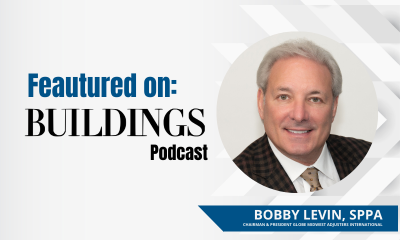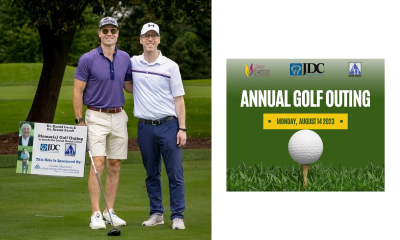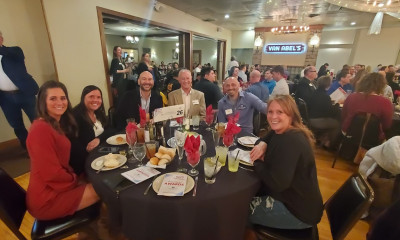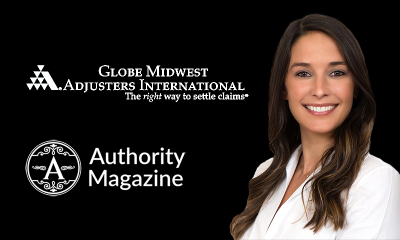Surging Construction Costs Create Surging Risk of Being Underinsured
This article by advisory board member, Ethan A. Gross, JD, Chief Executive Officer of Globe Midwest™ Adjusters International, discusses the surging construction costs driven by the pandemic and the affect it may have on insureds and their coverage.
The COVID-19 pandemic has created numerous challenges across a variety of industries. The insurance industry is no exception. Early on, the insurance industry faced issues directly related to the pandemic – such as coverage for loss of income and dealing with policy deadlines that could not be met due to nationwide shutdowns. Now there is a new challenge that runs deeper and impacts every person or entity buying or selling property insurance: how to adequately insure property in a market that is seeing substantial and rapid increases in construction costs.
In the beginning of the pandemic, production of many key construction materials, such as lumber, slowed dramatically. At the same time, demand increased. This is based on a combination of events. According to a recent article in Fortune, “At the onset of the pandemic, quarantining Americans set off a home renovation and DIY boom that is still keeping places like Home Depot busy today. Additionally, low interest rates and tight existing home inventory have more home buyers looking for new construction. Indeed, in December housing starts hit their highest level since 2006.”
According to the National Association of Home Builders, lumber prices have increased nearly 250 percent since Spring 2020, causing the price of the average single-family home to increase by more than $24,000.00. The dramatic and rapid increase in the cost of materials is impacting all aspects of construction, not just new home building. Based on conversations with numerous insurance restoration contractors, they are struggling to complete repairs for the amounts agreed to in the adjustment process. These factors create a “perfect storm” of potential problems for insureds trying to protect their property.
The Impact of Rapidly Increasing Construction Costs on Insureds
The most obvious and direct impact of increased construction costs on insureds occurs when they have a loss. Construction costs are increasing faster than insurance policies can keep up. Most policies renew annually. Many policies have built-in inflation guards and will increase automatically upon renewal. Some policies even have inflation guards that will prorate a nominal increase from the date of the inception of the policy up to the date of loss. In normal times, assuming no major changes to the property, these increases are either sufficient to keep up with average increases in construction costs or are actually ahead of inflation, resulting in properties being slightly over insured. While there is very little downside risk to being over insured, there are significant risks to being underinsured.
Consider this: the owner of a commercial property is knowledgeable about insurance and has a sophisticated and competent agent or broker. Every year, the owner and agent review the policy and adjust the limits as necessary. The owner was careful to insure the property to value ten months ago. If that owner now suffers significant damage from a covered loss, based on the current construction market, the cost to repair the property will likely be in excess of the policy limit that was sufficient when the policy was purchased. This leaves this otherwise prudent property owner underinsured.
Further compounding these damages, it would be likely the property owner had coinsurance on the policy. The standard coinsurance language provides a penalty when insureds fail to insure to value, or within the margin prescribed in the policy. The coinsurance penalty is determined by comparing the amount of insurance to the “value of the Covered Property at the time of the loss . . .” (CP 00 10 10 12), not the value at the time the insurance was purchased.
In our example, even though the insured did their due diligence and made sure to insure to value at the time the insurance was purchased, the “value” (assuming we are looking at replacement value) has changed so dramatically during the policy period (past ten months), that the insured is not only underinsured but is also going to suffer a coinsurance penalty. Such a scenario would likely be devastating to many insureds, causing them to go out of business. According to the Federal Emergency Management Agency (FEMA), “roughly 40 to 60 percent of small businesses never reopen their doors following a disaster.” This statistic is based on disasters during “normal” times. Consider the impact now, when construction costs have increased exponentially in such a short period of time.
The recent increase in construction costs creates numerous potential problems for insureds trying to protect their property in the event of loss. And, with experts predicting an above average 2021 Atlantic hurricane season, as well as increased potential for an intense wildfire season, these factors create a recipe for disaster. Fortunately, there are ways to minimize the risk of being underinsured, as well as avoiding coinsurance penalties. Agents and brokers should take action immediately to inform their clients of the potential risks of being underinsured due to the recent increase in construction costs, and advise their clients on how to best minimize or avoid these risks.
How to Protect Against Surging Construction Markets
Based on industry predictions, there is no indication that this current surge is merely a bubble that will drop back down anytime soon, if at all. It is important that insurance agents and brokers, as well as property owners, are aware of the rapid increase in construction costs and take appropriate action to make sure that properties are adequately insured. Some actions that should be considered now are:
- Policy Reviews – Consider changing from annual policy reviews to semi-annual or quarterly reviews during surging markets.
- Notice – Agents and brokers should consider notifying their clients of the current market conditions and potential impact on their insurance. That way, the insured can make a well-informed decision in regards to increasing the amount of insurance they carry.
- Valuation – Agents and brokers, and their insureds, should perform updated property valuations utilizing sources that factor in the current market conditions.
- Agreed Value – Agreed Value endorsements negate the coinsurance penalty. While removing the coinsurance and adding this endorsement will likely result in an increase in premium, the financial risk of being underinsured is so great that the benefits should outweigh the costs.
- Increased Replacement Cost Endorsement – Residential insureds should consider purchasing an Increased Dwelling Cost Endorsement. Also known as Extended or Guaranteed Replacement Cost, this endorsement promises to pay up to a specified amount in excess of the limit of insurance. This insurance typically increases the policy to 125 percent of the stated limit. While these endorsements have certain preconditions, such as insuring to 100 percent of value, that value, unlike coinsurance, is determined at the beginning of the policy, not at the time of loss. Assuming all the conditions are met, this endorsement provides excellent protection to homeowners faced with quick and dramatic construction cost increases like those we are experiencing now. Note, similar endorsements are available on some commercial policies as well. It is advisable to obtain this endorsement on commercial property where available.
Download this article as a PDF here.













